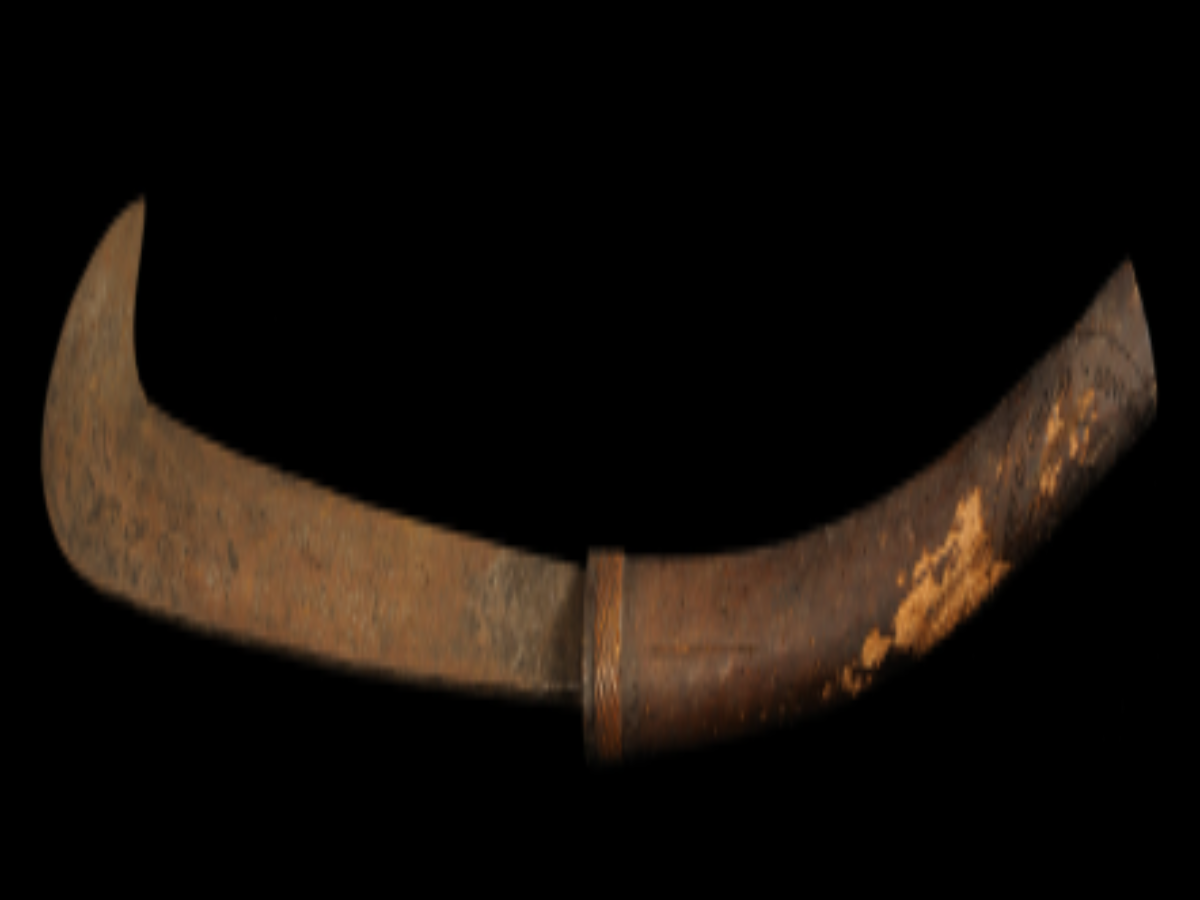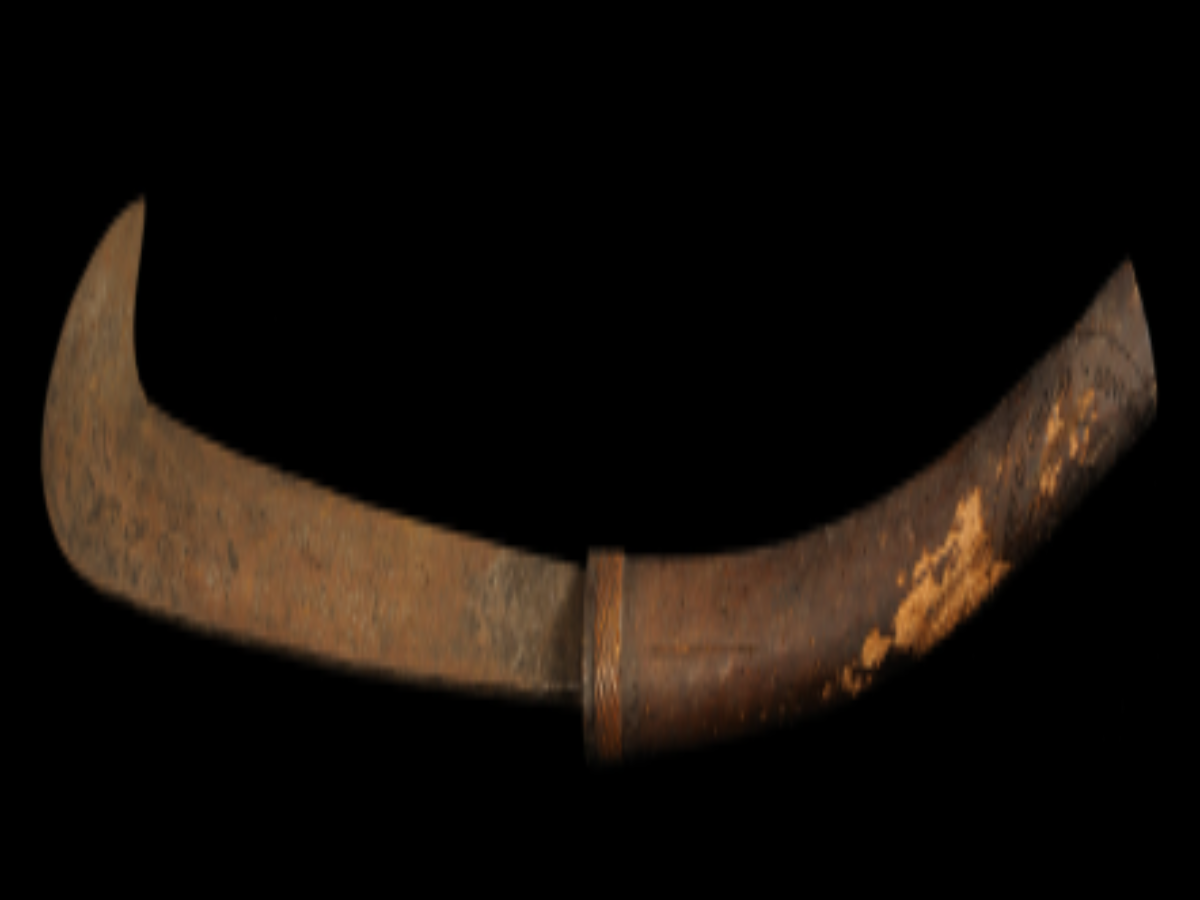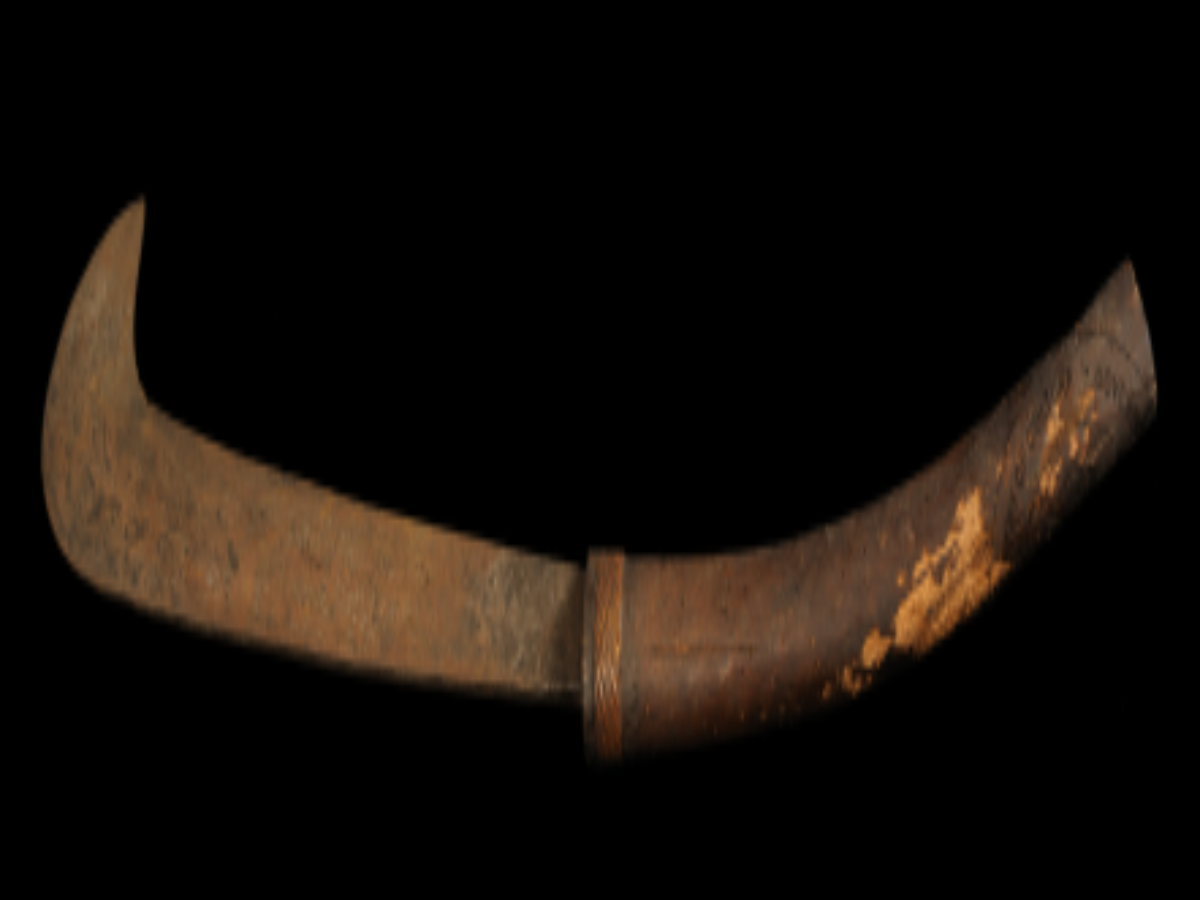State
Tribe Name
Art Type
short description
This traditional dao, called Ka-Wait-Lyngem in the local Khasi dialect, is indicative of the community's legacy of blacksmithing and craftsmanship. It has a large, broad iron blade with an acute-cutting edge; the back edge is blunt for balance and durability during practical use. On the top of one side, the blade has a pronounced outward curve that goes along quite well with slicing and hacking motions involved in agricultural and daily tribal life. The blade itself is held firmly into a cylindrical, narrow wooden grip, which is itself secured with the normal tang insertion. The structure thus increases the integrity of the tool. A ferrule or binding ring is commonly incorporated to tightly bind the connection between the blade and handle for durability.
Thumbnail

Filter Postion
Right
Filter Background
Off
Theme
Filter Header Image

content
Image

description
This traditional dao, called Ka-Wait-Lyngem in the local Khasi dialect, is indicative of the community's legacy of blacksmithing and craftsmanship. It has a large, broad iron blade with an acute-cutting edge; the back edge is blunt for balance and durability during practical use. On the top of one side, the blade has a pronounced outward curve that goes along quite well with slicing and hacking motions involved in agricultural and daily tribal life. The blade itself is held firmly into a cylindrical, narrow wooden grip, which is itself secured with the normal tang insertion. The structure thus increases the integrity of the tool. A ferrule or binding ring is commonly incorporated to tightly bind the connection between the blade and handle for durability.
The dao holds not only practical purposes in agricultural, wood-cutting, and household duties but also exhibits deeply symbolic and cultural meaning among the Khasi. Thus, in many Northeast Indian tribal surroundings, weapons symbolize status, identity, and ancestry, making them priceless items of ethnographic interest in museum collections today.
The dao holds not only practical purposes in agricultural, wood-cutting, and household duties but also exhibits deeply symbolic and cultural meaning among the Khasi. Thus, in many Northeast Indian tribal surroundings, weapons symbolize status, identity, and ancestry, making them priceless items of ethnographic interest in museum collections today.
Image Mode
landscape
promoted
On
Verified
Off
